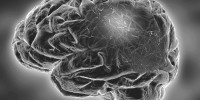
Unveiling the Hidden Immune System
Neuroinflammation is a response of the immune system to injury or damage in the nervous system, including the brain and spinal cord. This response can be triggered by a variety of factors, such as infection, injury, or neurodegenerative disease. The inflammatory response in the brain is mediated by a complex network of cells and molecules. This includes immune cells, cytokines, and chemokines. They work together to remove the injury or damage, but can also contribute to tissue damage and disease progression. Neuroinflammation has been implicated in a number of neurological and neurodegenerative disorders. These include Alzheimer’s disease (AD), Parkinson’s disease, and also multiple sclerosis.
Cerebrospinal fluid (CSF) plays a major role in age-related and neurodegenerative diseases: CSF is a bodily fluid found in the central nervous system (brain and spinal cord). It is formed by the so-called choroid plexus in the brain ventricles. It circulates in a system of communicating cavities called the CSF space.
So, neuroinflammation is a pathological hallmark of age-related neurodegenerative disease. Recent studies have shown that the CSF can provide molecular cues to immune cells of the skull bone marrow to alter CSF myeloid populations in mice. However, the influence of age on the molecular mechanisms regulating CSF immunity in humans is unclear. How does CSF differ between healthy people and people with neurodegenerative diseases? What changes occur in the CSF? And how can we use this information? A new study clarifies.
This Changes in the CSF in Neurodegenerative Diseases
In this study, researchers performed single-cell RNA sequencing on CSF from cognitively normal and cognitively impaired individuals to examine the influence of age on the CSF immune system. The results showed that in cognitively normal subjects, lipid transport genes in monocytes were upregulated with age. In cognitively impaired subjects, lipid transport genes in monocytes were downregulated and altered cytokine signaling to CD8 T cells occurred.
Additionally, clonal CD8 T effector memory cells had an upregulation of a specific receptor (CXCR6) in cognitively impaired subjects. The study suggests that the CXCL16-CXCR6 signaling axis may be a mechanism for antigen-specific T cell entry into the brain in cognitively impaired individuals. The findings also highlight the potential utility of measuring CSF immune changes to identify disease-associated neuroinflammation in cognitively impaired individuals and to gain insight into the pathophysiology of cognitive impairment.
 We localized CXCR6+ T cells and CXCL16+ myeloid cells to amyloid plaques in AD post-mortem brains. Therefore, our single-cell transcriptomics resource identified the CXCL16-CXCR6 signaling axis as a potential mechanism for T cell entry into brains with neurodegeneration. Finally, we uncover an unexpected level of significantly altered AD risk genes in CSF T cells of cognitively impaired subjects.
We localized CXCR6+ T cells and CXCL16+ myeloid cells to amyloid plaques in AD post-mortem brains. Therefore, our single-cell transcriptomics resource identified the CXCL16-CXCR6 signaling axis as a potential mechanism for T cell entry into brains with neurodegeneration. Finally, we uncover an unexpected level of significantly altered AD risk genes in CSF T cells of cognitively impaired subjects.